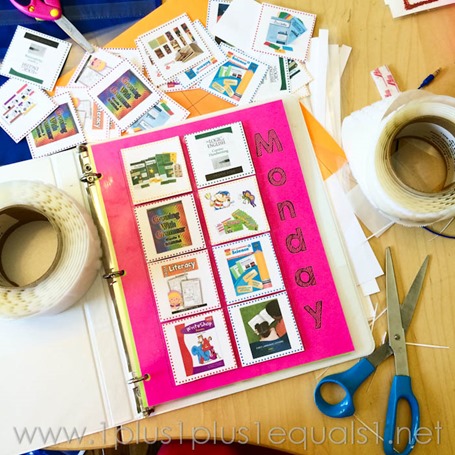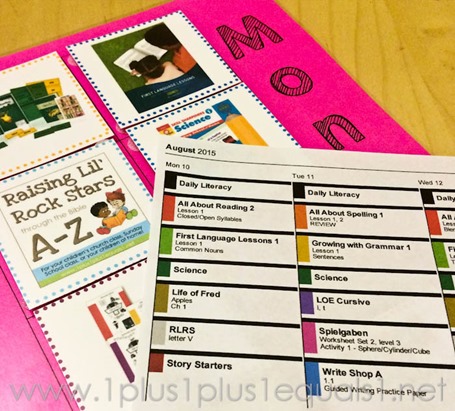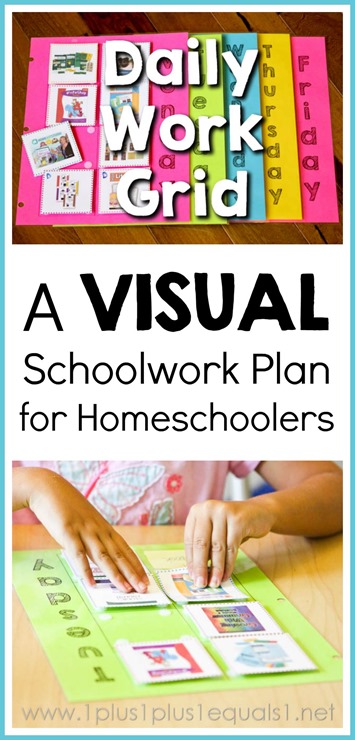

This idea has been brewing in my mind for years, I just never took the time to create it until now. It is similar to methods we have used in the past and resembles methods other homeschoolers use. It isn’t a totally new idea, just a new twist on methods I have both used and seen, adapted to suit our current needs.
Many of you saw my photo on Instagram several months ago when I created the cards and grid. There were tons of questions about it and I promised a blog post!
It did take some time to set up and I explain how I did it in the video below…
Many have asked about our Daily Work Grid that I am using with our 1st grader and I finally got a video together for you! See how we use it and a tutorial for how I made the grid and the subject cards in PowerPoint.Blog post coming soon!**See more VIDEOS on our YOUTUBE Channel ~ https://www.youtube.com/user/carisahh**SUBSCRIBE to our blog posts ~ http://mad.ly/signups/115694/join
Posted by 1+1+1=1 on Sunday, August 30, 2015
I shared this photo the night before we began 1st grade, which shows our Lessontrek plan and our Daily Work Grid ready to go for her first day of school.
We have now been using this method for over 3 week and it is working very well for us! She loves the visual choices she has, and also seeing how much she has left each day.
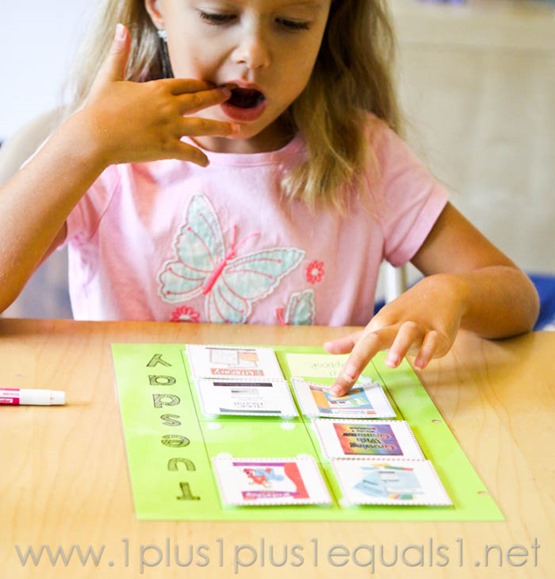
Having a visual daily grid like this for a young child helps us in many ways. The biggest help for us is the fact that expectations for the homeschool day are crystal clear. There are many ways to do this, a simple list on the board or in a notebook works well for many families.
For our 1st grader, this is a visual intro to following a daily homeschool plan. For us Kindergarten and below is much more play-based and child-led so the lesson plans are really only for me up until now. With an end goal of more independence in homeschooling, this visual daily grid eases her into this.
By showing her clearly what is to be done that day, she knows what to expect. The cards coming off give her a feeling of accomplishment and also help squash the “how much more do I have to do today” questions {and sometimes attitude problems}.
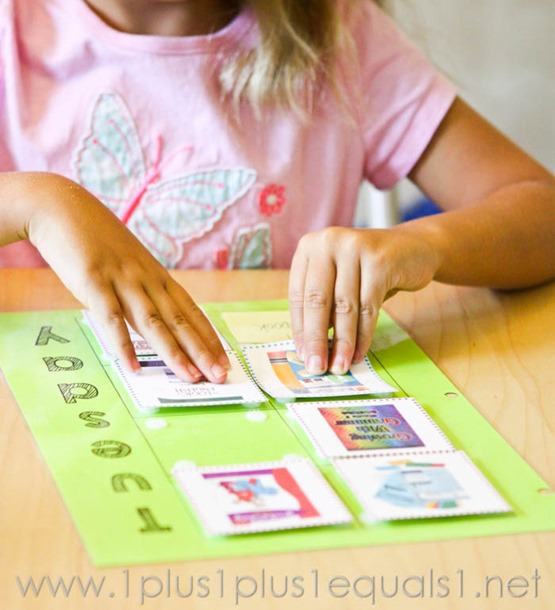
Using a daily work grid like this may be beneficial for you if you…
- have a child who likes to know what is expected each day.
- have a child who needs a visual rather than written version.
- have a child who whines or complains about how much is left to do.
- have a young child who is easing into following a daily homeschool routine {usually beginning in K-2}.
- like creating things on your own and have the time {this takes time to prepare}.
I would not recommend this method if you…
- have an older child who can easily read a written list and doesn’t really need visuals. No need to go backwards.
- have many children and would struggle to keep up with the consistent routine of this.
- don’t have time to even put this together.
- have a young tot or preschooler who is more play-based and child-led, they don’t necessarily need a grid like this. I don’t recommend being this planned out in the early years. Having freedom to go with the flow during those early years is more important that following the daily plan. This is exactly why I never give lesson plans for any of my tot programs {Tot School Printables, Animal ABCs, etc.} I believe in a more flexible plan during those years. Every child is different and the pressure of a daily plan doesn’t allow for this as much. I personally would not have used something like this until Kindergarten. It would have been great last year I just didn’t have time to create it.
Here’s the video sharing how we use our daily grid and how I created the grids and subject cards in PowerPoint. I am sorry fi you don’t have PP, this is just what I use mostly to create my printables and I can only share how I do it. Many aspects will be similar in another program, hopefully you can get the general idea!

